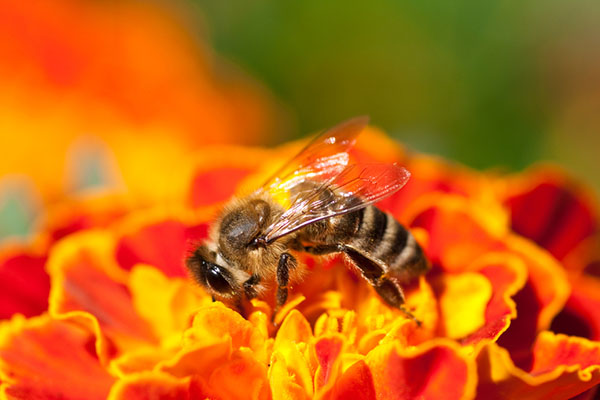Bee stings can be painful for some, and scary for others. Here are a few ways to help treat bee stings and steps you can take to help reduce the swelling.

Though they induce serious allergic reactions in some, bee stings most often result in localized pain and swollen red skin. Always consult your physician for recommendations on what to do for bee stings. Additionally, there are ways to provide bee sting relief, many of which you already have at home.
In case of emergency
If the person stung starts to experience difficulty breathing or swallowing, hives, swelling of the face, throat or mouth, wheezing, dizziness or rapid pulse, he or she is having an allergic reaction. Seek emergency medical attention immediately.Immediate actions
If there's no need for emergency measures, the first step to bee sting relief is removing the stinger. The longer the stinger is in, the longer and more intensely the pain will be felt. By removing the stinger, you're also removing the venom sac. Less venom in the bloodstream means less pain. Use a credit card or your fingers to flick away the stinger and attached venom sac to stop the delivery of venom to the bloodstream.How to treat bee stings
Wash the area where you were stung with soap and water, then apply ice to the site to reduce pain and swelling. That ice constricts blood vessels, which numbs the pain and slows the circulation of venom in the blood. The symptoms should go away within minutes. If not, continue icing periodically (do not exceed more than 20 minutes per icing session). Ibuprofen is an effective pain reliever, but always consult your physician before taking any medication.What to put on a bee sting
For a more pharmacological approach, apply calamine lotion with analgesic or maximum strength hydrocortisone cream every four hours to soothe the sting. Antihistamine cream may also relieve sting symptoms, as will benzocaine sticks—it all depends on your body chemistry. Again, consult your physician before taking any medication or applying creams or ointments.Home remedies for bee stings
There are several at-home bee sting remedies out there, but their effectiveness is more anecdotal than medically sound. A few you may encounter include: applying toothpaste every five hours to the sting site; putting honey on the sting every 30 minutes; applying half of a raw, peeled potato at the site; smearing on a paste made of vinegar, baking soda and meat tenderizer. Before raiding your pantry, however, seek bee sting treatment advice from a medical professional.If you notice your symptoms getting more severe or the symptoms do not go away, consult your physician. It's possible to become allergic to stings even if you experienced no reaction to stings in the past. Typically, once you have a reaction, you'll continue to have allergic reactions.
Sources:
Mayo Clinic


